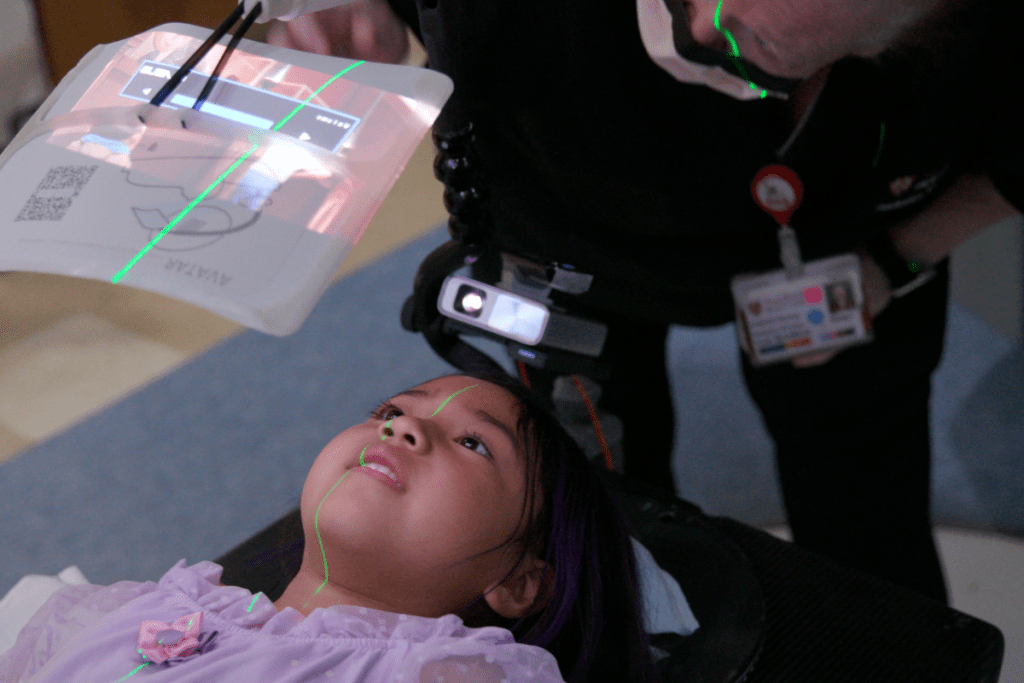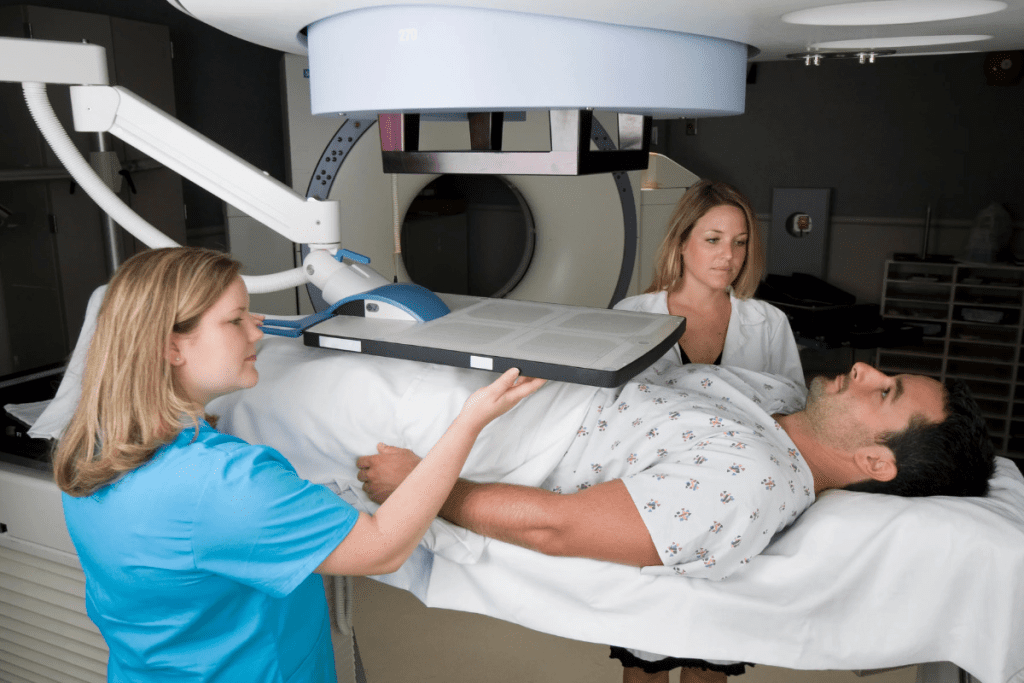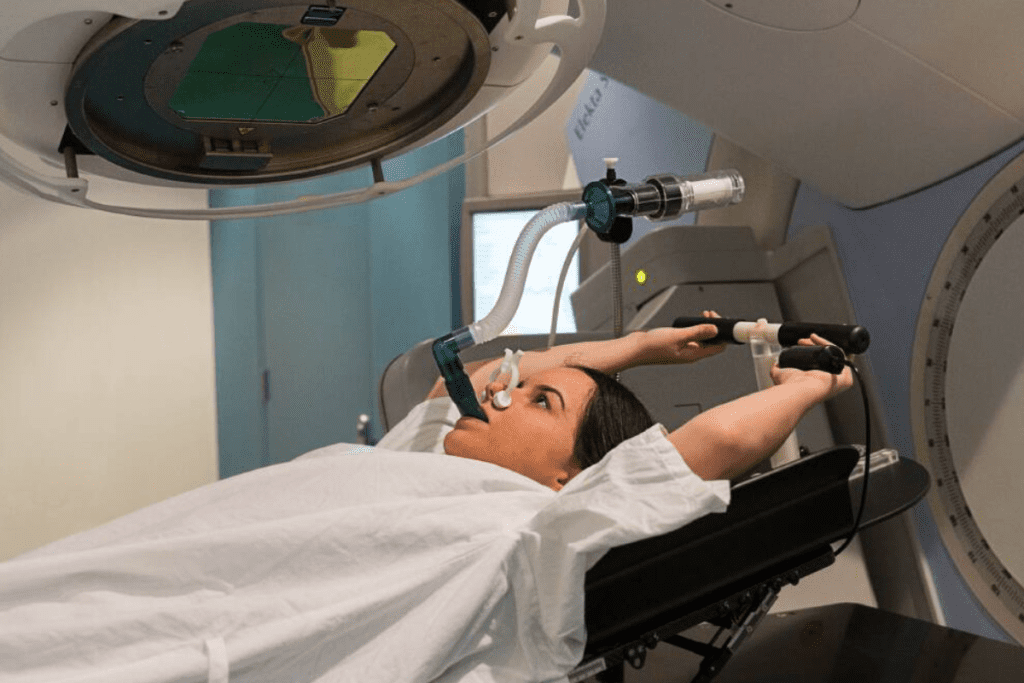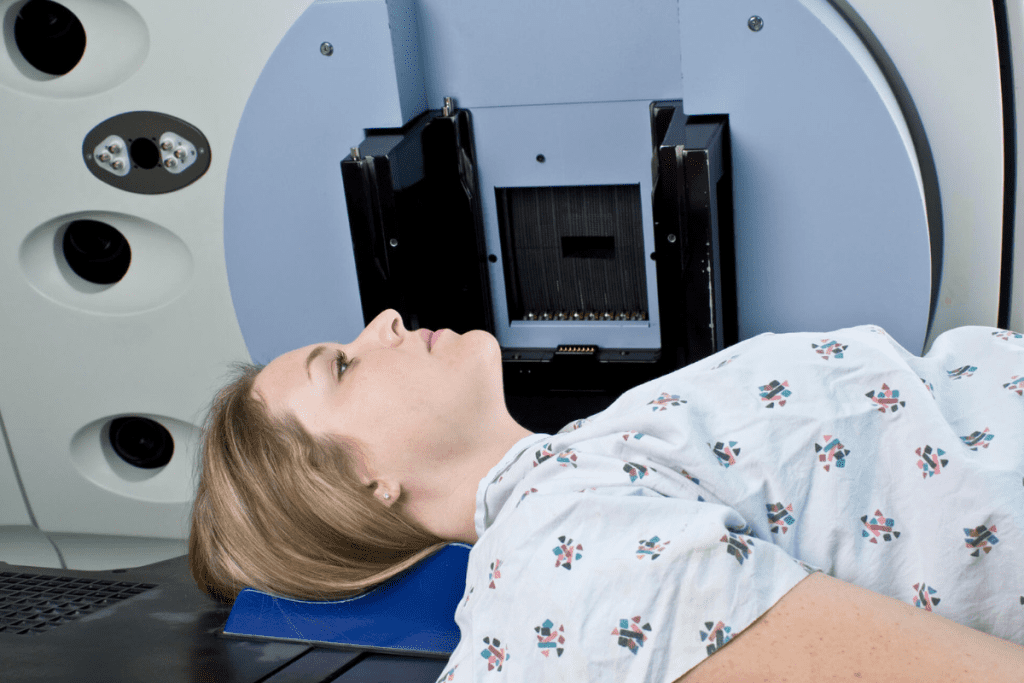Last Updated on October 20, 2025 by
Children are much more sensitive to toxic radiation than adults. The U.S. EPA says that kids and fetuses are at higher risk because their cells are growing fast. This makes them more likely to get cancer and face developmental problems.

Kids’ bodies are growing, and their organs are closer together. This makes them more open to radiation’s harm. Their bodies don’t shield as well, so their organs get hit harder by radiation.
Radiation effects on children are more severe compared to adults because kids’ bodies are still developing. Their rapidly dividing cells and thinner tissues absorb more radiation, making them highly vulnerable to long-term health risks. Studies show that radiation exposure in childhood can increase the chances of cancer, developmental delays, and damage to vital organs like the brain and thyroid. Pediatric CT scans and other imaging procedures must use the lowest radiation dose possible to reduce harm. Parents and healthcare providers should understand the radiation effects on children to ensure safer diagnostic and environmental practices.
This makes kids more at risk for cancer and delays in growth. It’s very important to know how radiation can harm kids.
We are always surrounded by radiation from natural and man-made sources. This is a normal part of our lives. Knowing about it is key to staying healthy.
Radiation is energy sent out as waves or particles. It’s divided into ionizing and non-ionizing types. Ionizing radiation can remove electrons from atoms, like X-rays and gamma rays. Non-ionizing radiation has less energy but can make atoms vibrate, such as radio waves and microwaves.
Radiation is everywhere in our lives. Some common sources are:
For example, Canadians get about 1.8 mSv of natural background radiation each year. This amount can change based on where you live and other factors.
Here are some examples of radiation in our environment:

Knowing about these sources and examples helps us see how common radiation is. It also shows why we need to be aware and safe.
Radiation is more dangerous for kids because their cells grow fast and they are smaller. Kids’ bodies are always growing and changing. This makes them more likely to get hurt by radiation.
Kids’ cells grow and divide quickly, making them more at risk from radiation. “Kids’ cells are more sensitive to radiation damage,” say health experts. This is because radiation can harm cells that are busy growing.

Kids have smaller bodies and organs that are closer together. This makes them more likely to get hurt by radiation. Their growing tissues and organs are very sensitive to radiation. For example, radiation can affect kids’ brains and how they think and socialize.
The Environmental Protection Agency (EPA) knows kids are more at risk from radiation than adults. The EPA says kids are more sensitive because they are growing and have more years of life ahead. This means they are more likely to have long-term health problems from radiation.
“Children are not just small adults; their developing bodies make them more susceptible to the harmful effects of radiation.”
EPA Statement
We need to think about these things when we talk about radiation risks for kids. Knowing why kids are more vulnerable helps us protect them from radiation’s harmful effects.
Children’s bodies absorb radiation in ways that differ from adults. This has big implications for their health. It’s key to know how radiation affects kids’ growing bodies.
The brain is a major concern. Studies show kids’ brains can soak up 2 to 10 times more electromagnetic radiation than adults. This is because kids have thinner skulls and more water in their brains.
The brain’s ability to absorb radiation is a big worry. It could harm kids’ brains and affect their thinking and nervous system. Kids’ thinner skulls let more radiation in, raising the risk of brain damage.
Other parts of kids’ bodies also absorb radiation differently. For example, kids have more water and different amounts of fat and muscle. This changes how radiation is absorbed.

It’s vital to understand these differences. This helps us create safety rules for kids around radiation. By knowing how kids absorb radiation, we can protect them better.
Radiation can harm children quickly and severely. It’s vital to spot the signs early. High doses can lead to sickness and even death. We’ll look at the dangers of radiation and its short-term effects on kids.
Too much radiation in kids can cause nausea, vomiting, and tiredness. These symptoms can show up hours or days after exposure. In bad cases, kids might lose hair, get skin burns, and face damage to their bones, lungs, and stomach.
Early detection is key. The more severe the symptoms, the higher the radiation dose. Doctors use several factors to judge how bad the exposure is.

Low-level radiation poisoning is harder to spot because symptoms are mild or late. Yet, kids can face health issues like headaches, dizziness, and a weak immune system. It’s important for parents and caregivers to watch for these signs.
If you think a child has been exposed to radiation, get medical help right away. Early action can greatly help kids affected by radiation.
Knowing the risks and spotting radiation signs are vital for kids’ health. Being informed and watchful can lower radiation risks and help kids recover better.
Radiation exposure can deeply affect children’s development. It’s important to know how radiation impacts their health over time.
Children exposed to radiation may see big changes in their thinking and social skills. Studies show that high-EMF environments can cause delays and impairments in kids. For example, kids in areas with lots of electromagnetic radiation might face more developmental problems.
Children’s brains are very sensitive to radiation. Research shows that radiation can lower cognitive function and increase the risk of developmental disorders. It can also change how kids behave and interact with others.
It’s important to look at research on kids in high-EMF areas. found that high electromagnetic fields can harm kids’ health and development.
Studies on kids in high-EMF areas have given us important information. They often point out the need for stricter safety rules and more research to understand radiation risks in children.
Knowing the long-term effects of radiation helps us protect kids’ health. We need to keep researching and watching the impacts of radiation. This way, we can find ways to lessen its harmful effects.
Radiation exposure in children is a big worry, with cancer being the main concern. We need to know the stats and which cancers are linked to childhood radiation. This helps us understand the issue fully.
Pediatric CT scans lead to about 5,500 future cancer cases each year. This shows how important it is to think about the risks and benefits of these scans in kids. Kids are more sensitive to radiation because their bodies are growing and they live longer, raising the chance of cancer.
Studies say we should use CT scans in kids only when really needed. We should also use the least amount of radiation possible. Looking for other imaging options is also key.
Some cancers are more linked to radiation in kids. These include:
These cancers are scary because they can show up years after the radiation. Knowing which cancers are at risk helps us find ways to lower these risks.
We must keep watching and studying the effects of radiation on kids. This helps us understand the dangers better. It also helps us make rules to protect kids from harm.
Healthcare providers must weigh the benefits and risks of medical imaging in children. Imaging is key for diagnosing and treating many conditions. But, it involves ionizing radiation, which worries parents and doctors.
Pediatric CT scans are a big concern because of radiation. CT scans give vital information for emergencies or complex conditions. But, they use more radiation than regular X-rays.
For each child, we must think about the risks and benefits. In emergencies, CT scans might be needed. But, we should use other imaging like ultrasound or MRI to lower radiation.
CT perfusion scans use contrast agents and repeat scans, leading to higher doses. They are useful for some diagnoses but should be used carefully in kids. Kids are more sensitive to radiation because their cells divide fast and they live longer.
Children are more vulnerable to radiation than adults. Adults might live shorter lives, so they face less risk of cancer from radiation. But, older people can be affected by radiation in other ways.
Healthcare providers need to understand these differences. This helps them decide when to use medical imaging in kids. They aim to find the right balance between getting the needed information and avoiding radiation risks.
Understanding the dangers of radiation for kids is key. Their bodies are growing and more sensitive to radiation. This makes keeping them safe from radiation very important.
The world has set a limit of 1 mSv of radiation per year for everyone, including kids. Workers in the nuclear field can get up to 50 mSv in a year. But kids are more vulnerable because their cells and tissues are growing fast.
Safety Thresholds for Children:
Radiation can come from medical tests or the environment. Medical tests like CT scans give more radiation but are needed for health reasons. Knowing the difference helps us manage risks better.
Key differences between medical and environmental radiation exposure:
To keep kids safe from radiation, we need to understand the risks and sources. It’s a big job that requires teamwork from parents, doctors, and lawmakers.
Understanding the impact of electromagnetic radiation (EMF) on children’s health is key. The rise in technology use among kids has sparked worries about EMF exposure. This is due to devices like phones, Wi-Fi routers, and laptops.
Kids face EMF from many sources, like mobile phones, Wi-Fi routers, and tablets. These gadgets are now a big part of their day, from school to fun.
Common EMF sources include:
Research is ongoing about EMF’s effects on kids’ bodies. Some studies suggest it could harm their developing brains and bodies.
The scientific evidence is growing, and it’s vital to keep studying EMF’s long-term effects on kids.
We should be careful and try to reduce exposure. Simple steps, like using airplane mode and keeping Wi-Fi routers out of bedrooms, can help.
Parents and caregivers need to know these risks and take action to lessen them.
Children are very sensitive to radiation, which means we need to look at how to protect them worldwide. It’s clear that we need a variety of ways to keep their health safe from radiation harm.
Many countries know how important it is to shield kids from radiation. They have set up strict rules to keep children safe. We’ll look at some countries that are leading the way in this effort.
Some countries are really strict about keeping kids safe from radiation. For example, Japan has tough rules after the Fukushima accident to lower kids’ radiation exposure. Germany also has rules for safe use of medical imaging in kids, making sure doses are as low as possible.
These countries are taking a strong stance on keeping kids safe. They use the latest technology and strict rules to protect children’s health. By studying their methods, we can learn how to better protect kids from radiation.
Hospitals and medical centers also play a big part in keeping kids safe from radiation. Many places have their own safety plans that are even stricter than national rules. They use new technologies to cut down on radiation during medical tests.
Some places use low-dose CT scan protocols just for kids. These adjust the dose based on the child’s size and the test needed. This helps a lot in reducing radiation risks for kids.
Also, hospitals are training doctors and nurses in the newest ways to keep kids safe from radiation. This helps them make smart choices about using radiation in kids’ care.
By combining strict national rules with advanced hospital plans, we can really protect kids from radiation harm. This mix of efforts is key to keeping kids healthy and safe all over the world.
As we live in today’s world, we must recognize the role of radiation. It’s important to reduce its effects on our kids. We’ve looked into the science of radiation, its impact on young bodies, and the dangers of long-term exposure.
To keep our kids safe from radiation, we need to know where it comes from. This includes medical scans and natural sources. Knowing what levels are harmful helps us make choices to protect our children.
Protecting our kids from radiation is a big task. We must follow safety rules for medical tests and limit exposure to devices. By taking these steps, we can lower the risks of radiation. This way, our children can have a safe place to grow and succeed.
Radiation is energy from sources that travels through space. It can harm children because their bodies are growing and their cells are dividing fast. We’ll look into how radiation impacts kids.
Kids are more at risk because their cells grow quickly and their bodies are different from adults. The U.S. EPA also says kids are more sensitive to radiation. This makes their developing bodies more vulnerable to harm.
Short-term effects on kids can include signs of radiation poisoning. High doses can cause serious health problems. We’ll discuss the dangers of radiation exposure.
Long-term effects can include impacts on thinking and social skills. Kids may also face a higher risk of cancer. Studies show radiation can harm kids’ health and development.
Kids absorb radiation differently because of their size and growing organs. For example, kids’ brains absorb radiation 2-10 times more than adults. This makes them more vulnerable to damage.
The main worry is the increased risk of cancer. Studies link pediatric CT scans to cancer later in life. Some cancers are more common in kids exposed to radiation.
Medical scans like CT scans are a risk-benefit trade-off. They help diagnose but also expose kids to radiation. We’ll look into the risks and benefits of these scans.
The danger level varies by age. Safety limits are set for different ages. We’ll talk about the risks of medical and environmental exposure.
EMF is everywhere in kids’ lives, from devices to technology. We’ll explore how radiation from these sources affects kids’ health.
Some countries have strict rules to protect kids from radiation. We’ll look at these global standards and how they help keep children safe.
Radiation comes from medical scans, the environment, and devices that emit EMF. Knowing these sources helps us reduce risks.
We need to be aware of radiation risks and follow safety rules. Using technology and medical scans wisely helps protect kids from radiation.
Subscribe to our e-newsletter to stay informed about the latest innovations in the world of health and exclusive offers!